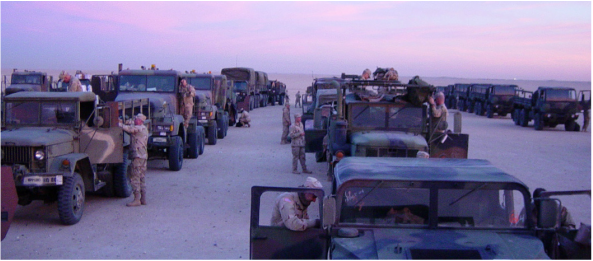|
In the Army, we have a format for mission planning called an Operation Order, or op-order for short. When I was learning to be an officer, it was called the Five Paragraph Operation Order, even after the Army added a sixth paragraph for safety. Since my mission is decluttering, I decided to make a basic op-order for the process. In this post, I’ll describe an op-order and then put a rough one together using my son’s room as an example. Later, I’ll put it to the test and let you know how it goes. Here are the main parts of an op-order with a short description of each. The full Army version has many sub-bullets for each. See the link above for more details.
A Note on the Execution ParagraphIn the Army, we used a method called backwards planning to develop a timeline in the execution section. Backwards Planning is just a cool sounding term for something that most of us do every day when we figure out what time we need to get out of bed in the morning so that we get to work on time. I always thought it was ridiculous how much time we spent learning and practicing this process because it seemed so obvious to me. Unfortunately, I’m often surprised to find how many people just do not get the concept. Backwards planning starts with a specific time that you need to be somewhere or do something. Then you work backwards from there taking into account what activities need to happen before that critical time and how long each of them takes. Some tasks can be done in parallel and some cannot. It’s that simple. For example, you need to be at work by 8 am. OK. The last thing you do before leaving might be to pack your bag and grab your coat, etc. That takes about 5 minutes. Breakfast takes 15 minutes. 20 minutes for a shower. At least 10 minutes to pack lunch. Don’t forget the fact that you like to snooze the alarm for 10 minutes every morning and that it takes an average of 30 minutes just to get to work. Add all that up and it looks like you need to get up about 6:30 am. In ClosingI didn’t want to make this too long so I’ll save the actual op-order for later but I think that in general the Army is on to something when it comes to planning out how to accomplish a large task and share that vision with others with the operations order. I’ll let you know how it goes as soon as I can test this out and I’ll post my written op-order. I’m coming up on my one year anniversary since my first blog post so that might be a good topic to celebrate with. Thanks for reading. If you have time, please share this or another post on your favorite social media outlet and feel free to subscribe to email updates below. |
Details
Categories
All
Copyright Dave Lubke and www.davelubke.com, 2022
This website uses marketing and tracking technologies. Opting out of this will opt you out of all cookies, except for those needed to run the website. Note that some products may not work as well without tracking cookies. Opt Out of Cookies |
This website is built on the Weebly platform.
To build your own free website with Weebly, click the link below.
To build your own free website with Weebly, click the link below.



